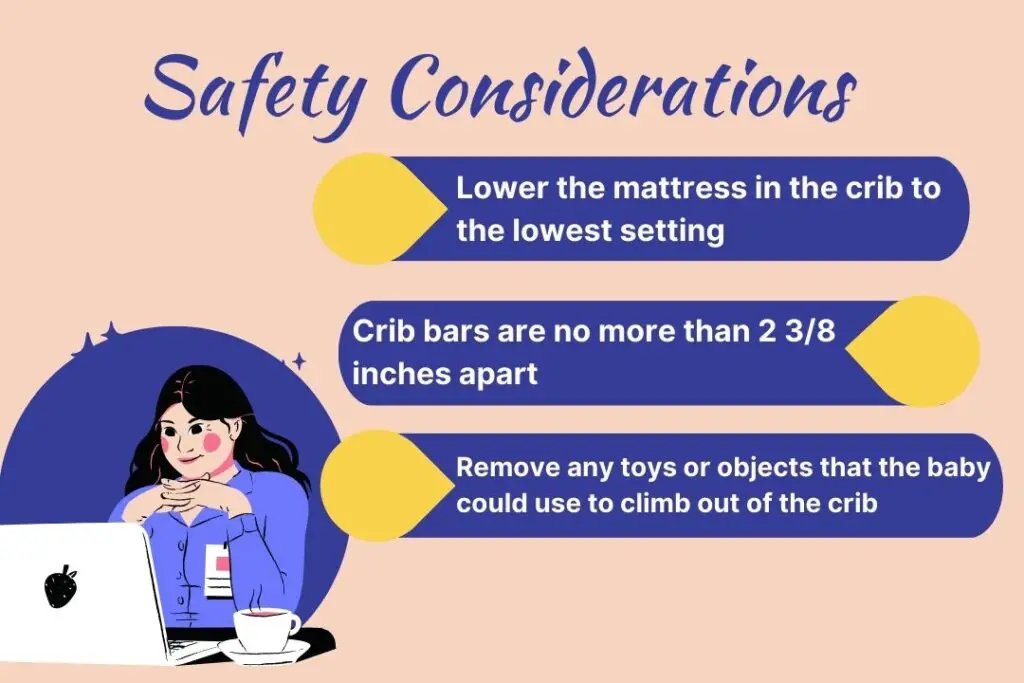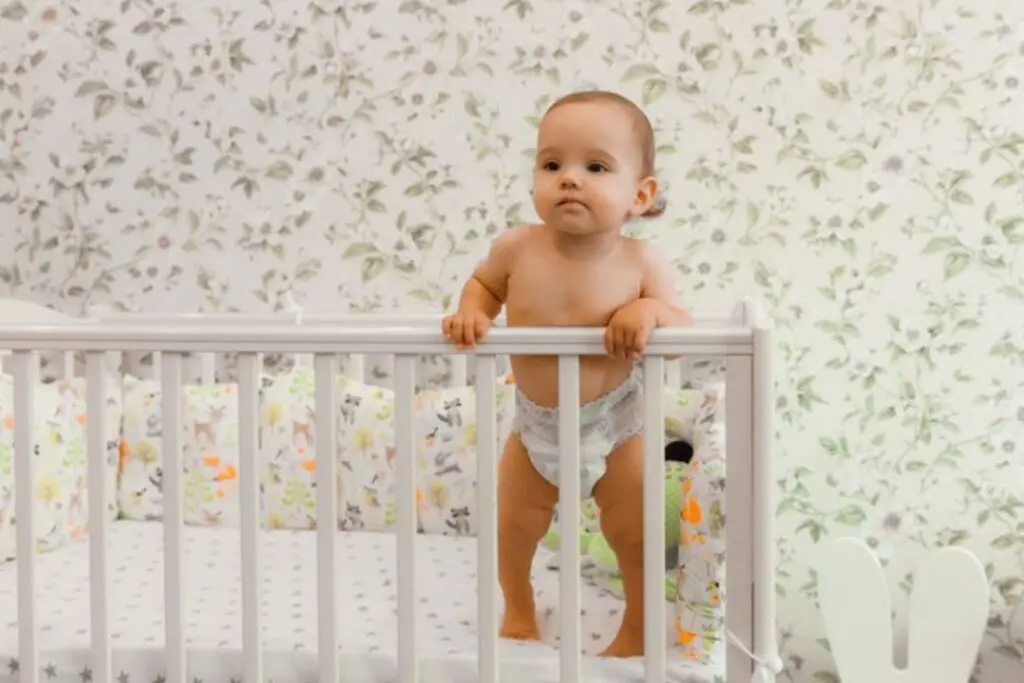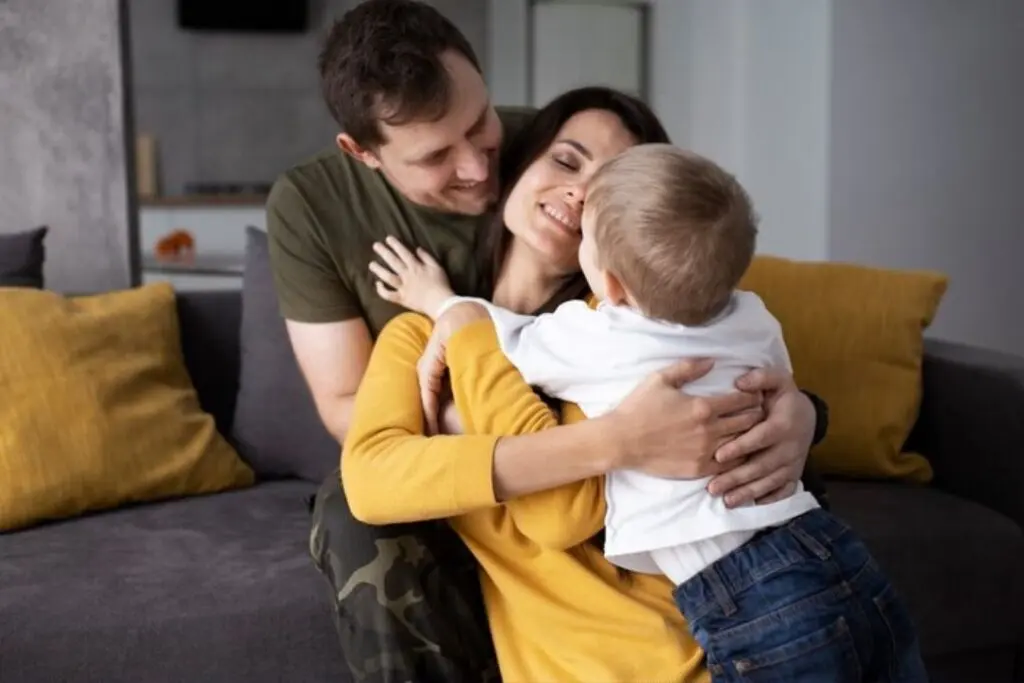As a parent, one must want to ensure that our little ones are safe and comfortable. One common concern among parents is when their baby starts standing up in their crib. This can be a worrying behavior, as it raises questions about safety and whether it’s time to transition to a different sleeping arrangement.
In this blog post, we’ll explore the developmental milestones that lead to a baby standing in their crib, the potential safety risks to be aware of, and what alternatives to a crib are available for your growing baby.
We will also provide tips for parents to encourage and safely support their baby’s development. At the the end of this post, you will better understand how to handle this new stage in your baby’s growth and how to keep them safe while they sleep.
Developmental Milestones
Babies typically begin to pull themselves up to a standing position in their cribs around 8-12 months. This is a natural part of their development and a sign that your baby is becoming more mobile. As babies begin to pull themselves up, they also develop their balance and coordination, which are essential skills for crawling and walking.
During this stage, parents may also notice their baby beginning to cruise or walk along furniture while holding on for support. This also signifies that your baby is getting closer to taking their first steps.
Encouraging and supporting your baby’s development during this stage is essential. Providing opportunities for your baby to practice standing and cruising, such as placing toys at the crib’s edge or setting up a playpen in the room, can help them develop the necessary skills.
Parents can also play with their babies while standing in the crib, using toys that will help them practice their balance and coordination.
You must keep in mind that each baby progresses at their own pace. Some may begin to stand in their cribs sooner or later than others. If you have any worries about your baby’s development, it’s always best to consult with your pediatrician.
In summary, a baby standing in the crib is a natural development milestone that signifies their growing mobility, balance, and coordination.
Parents need to encourage and support this development by providing opportunities for the baby to practice standing and to be aware of any safety concerns that may come with this behavior.
Safety Considerations

While a baby standing in their crib is a natural developmental milestone, it also raises safety concerns. Moreover, one of the most significant risks is that the baby may fall out of the crib, which can result in injury.
To mitigate this risk, it is vital to lower the mattress in the crib to the lowest setting. This will make it more difficult for the baby to climb out and reduce the distance they can fall if they manage to get out.
Another safety concern is that the baby may get trapped between the crib bars. To prevent this, it is essential to ensure that the crib bars are no more than 2 3/8 inches apart. Additionally, parents should remove any toys or objects that the baby could use to climb out of the crib, such as stuffed animals or pillows.
It is also very important to remember that a baby standing in their crib may be more active and curious, which means they may be more likely to reach for things they shouldn’t. Parents should be vigilant and ensure that there are no dangerous items near the crib, such as cords or small items the baby could choke on.
While these safety precautions are necessary, it is also essential to remember that the most effective way to keep your baby safe is through constant supervision. Parents should always be aware of where their baby is and what they are doing, especially in the crib.
Read More: How To Protect Baby From Hitting Head In Crib?
Alternatives to a Crib
As your baby grows and becomes more mobile, consider transitioning to a different sleeping arrangement. Several alternatives to a crib can provide a safe and comfortable sleeping environment for your baby as they continue to develop.
One option is a toddler bed. Toddler beds are smaller than twin beds and typically have low sides to prevent the baby from falling out. They also usually have a lower mattress height, making it more difficult for the baby to climb out.
Transitioning to a toddler bed can also be an excellent opportunity to introduce your child to a “big-kid” bed, which can help ease the transition to a twin bed later.
Portable Playards
Another option is a playard. Playards are portable and lightweight and come with a removable bassinet that can be used for infants.
This can be a good option for parents who travel frequently or have limited space. Playards also usually have mesh sides that allow parents to keep an eye on their babies while they sleep.
It’s also worth noting that some babies may be ready to move out of a crib and into a twin bed earlier than others, as every child develops at their own pace.
It’s always best to consult your pediatrician and know about it, if you have any concerns about your baby’s development and when to transition to a different sleeping arrangement.
In summary, as your baby grows and becomes more mobile, consider transitioning to a different sleeping arrangement, like a toddler bed, a playard, or a twin bed.
These alternatives provide a safe and comfortable sleeping environment for your baby as they develop. The timing of the transition should be discussed with a pediatrician and should be based on the baby’s development.
FAQs
What to do when your baby keeps standing up in crib?
Place pillows or folded blankets along the sides of the crib to prevent them from standing. Lower the crib mattress to its lowest level. Use a crib bumper or other safety measures. Consider transitioning to a toddler bed when appropriate.
When should I be concerned about my baby standing?
You should be concerned when your baby is able to stand up in the crib before they are 12 months old as this could be a sign of a developmental delay. Consult with your pediatrician if you have concerns. Also, if the baby is not able to sit down by themselves after standing up, it could be dangerous and you should take action to prevent falls.
At what age does a baby stop using a crib?
Babies typically transition from a crib to a toddler bed between 18 months and 3 years old. However, this can vary depending on the child’s development and should be based on their individual readiness. Consult with your pediatrician if you have any concerns about your child’s development.
Conclusion
In conclusion, a baby standing in their crib is a natural developmental milestone that signifies their growing mobility, balance, and coordination. Parents must encourage and support this development by providing opportunities for the baby to practice standing.
While also being aware of safety concerns and lowering the mattress, ensuring that the crib bars are no more than 2 3/8 inches apart, and removing any objects the baby could use to climb out. They are keeping dangerous items away from the crib and supervising the baby constantly while in the crib are some ways to minimize the risks.
As the baby grows, parents may consider transitioning to a different sleeping arrangement like a toddler bed, playards, or twin bed per their development stage and needs.




